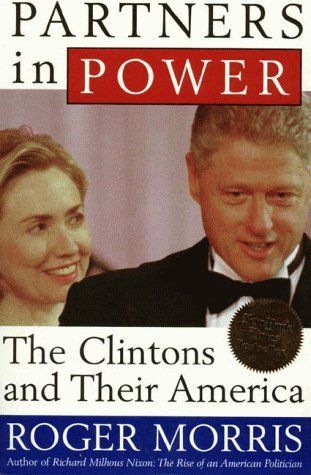Thomas Gaist
Since last fall, without any public acknowledgment by the US government and military, US warplanes have been bombing civilian areas in Iraq and Syria under loosened rules of engagement, the US Defense Department announced Wednesday.
Under the new rules, US forces may attack any area considered to have a “non-combatant value” of 10, that is, a likely fallout of fewer than 10 civilian deaths.
Given the current volume of airstrikes, the expanded rules of engagement imply that the Pentagon may murder thousands of civilians every month.
This March alone, US warplanes dropped nearly 2,000 bombs on Iraq and Syria, an increase over the 1,700 bombs dropped by US forces during the previous March. Last November, the US-led coalition set a new record for a single month, dropping nearly 3,300 bombs.
Since the beginning of “Operation Inherent Resolve” in August 2014, Iraq and Syria have been pummeled by a combined total of more than 40,000 bombs, the vast majority of them made by American companies and delivered by American planes.
“The gradualistic, painfully slow, incremental efforts of the current administration undercut the principals of modern warfare, and harken back to the approach followed by the Johnson administration,” retired US Air Force general David Deptula, now with the Mitchell Institute for Aerospace Studies, said Tuesday, defending the expanded air strikes in comments to USA Today.
The revelation comes amid numerous signs that Washington is preparing even greater military violence against the Middle Eastern working class and oppressed masses, as part of a general expansion of military operations throughout the region, coordinated with the Saudi monarchy and Gulf sheikdoms.
During a visit to Abu Dhabi Wednesday, US defense secretary Ashton Carter demanded increased involvement by the Gulf Cooperation Council governments of Kuwait, Bahrain, Qatar and UAE in the US war against Iraq and Syria.
The US defense chief called for the Arab monarchies to adopt new measures to counter Iranian power, including joint US-GCC patrols along Yemen’s coastlines in the Red Sea and Gulf of Aden, and adoption of US-sponsored plans to develop the cyberwarfare, special operations, naval and missile defense capabilities of the Arab states.
“The U.S. military remains committed and capable of responding to Iranian malign and destabilizing activities and deterring aggression against our regional friends and allies,” Carter said.
In the coming months, the American military will continuously “accelerate” its Iraq-Syria war, Carter said Monday. In remarks from Baghdad, Carter unveiled plans to deploy more than 200 additional US troops to Iraq, along with Apache helicopter gunships and High Mobility Artillery Rocket Systems (HIMARS).
The reinforcements will be deployed in support of large-scale assaults aimed at recapturing Mosul and other Iraqi cities currently held by Islamic State in Iraq and Syria (ISIS), Carter said.
The flurry of announcements of new US military projects has underscored the fact that, notwithstanding the Obama administration’s diplomatic overtures to Tehran, Washington remains committed to armed aggression throughout the region and to countering Iranian influence by military means.
“Despite all the differences, Saudi Arabia and America are not getting divorced. We need each other,” former Central Intelligence Agency official and Brookings Institution intelligence analyst Bruce Riedel told CNN.
Despite the emergence of real divisions within the US-Saudi camp, the Kingdom remains the central pillar of US domination over the region.
In a Center for Strategic and International Studies (CSIS) report Wednesday, titled “The Saudi and Gulf Perspective on President Obama’s Visit,” leading US ruling class strategist Anthony Cordesman explains the indispensable role of the US-Saudi alliance within the US-dominated world order established at the end of the Second World War.
“America’s strategic ties to Saudi Arabia and the other Gulf states—which in practice include Bahrain, Jordan, Kuwait, Oman, Qatar, and the UAE—have been critical to U.S. strategic interests ever since Britain withdrew from the Gulf,” Cordesman notes. “The strategic partnership between the U.S. and Saudi Arabia has been progressively more important ever since President Roosevelt met with King Ibn Saud on the deck of the USS Quincy in the Suez Canal on February 14, 1945.”
US political and military domination over the Arabian Peninsula and Persian Gulf remains necessary to what Cordesman identifies as the central priority of American policy in the region, namely: “Ensuring the stable flow of some 17 to 18 million barrels of petroleum exports per day out of the Gulf, and steadily increasing the flow of oil, gas and product exports to meet the demands of the global economy.”
US control over these resources requires continued funding to the Gulf States in support of “weapons systems tailored to supporting joint action against Iran.” The US must work closely with its regional partners to “deal with the full range of complex threats posed by Iran” and counter “the steady expansion of Iranian influence and arming of non-state actors and proxy forces in areas ranging from Lebanon and Gaza, to Syria and Iraq, which threatens states like Kuwait, Bahrain, and Yemen,” Cordesman warns.
Waged under the banner of “the war against ISIS,” the US wars in Iraq and Syria, are driven in large measure by Washington’s determination to thwart the emergence of Iran as a regional hegemon, the threat of which has become more acute as Iranian influence in both Iraq and Syria has grown amid the wreckage produced by US-led wars against both countries.
US imperialism is desperately seeking to defend its position through further support for and massive arms sales to the Saudi and Gulf militaries, which are stoking sectarian conflicts throughout the region, moving toward ever greater confrontation with Iran and pushing the entire region toward an all-out conflagration.
